AI innovation is conditioning clients to expect a speedy service from lawyers. How are mid-tier firms meeting this challenge, as well as ensuring that staff have the right skill-set? Joanna Goodman reports from the latest Gazette roundtable discussion
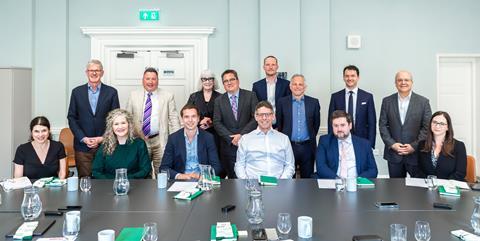
At the table
Back row (l-r)Ed Simpson The Legal Director; Tony Roe Dexter Montague; Laura Devine Laura Devine Immigration; Eduardo Reyes Law Society Gazette; Tim Coles Thomson Reuters; Andrew Katzen Hickman & Rose; Adam Merali Merali Beedle; Gregory Palos Lawrence Stephens
Seated, front row (l-r)Joanna Goodman Law Society Gazette; Clare Murray CM Murray; Chris Chapman Thomson Reuters; Gareth Brahams BDBF; Ben Kieft Sphere Legal; Yanthé Richardson Foot Anstey
Hybrid working, instant messaging platforms, and AI-powered online chatbots and portals are changing clients’ expectations around lawyers’ response times and the timelines for legal services delivery. The Gazette roundtable, sponsored by Thomson Reuters, discussed how mid-market firms are adapting to these expectations, especially in matters where outcomes are predicated on speedy service.
How do firms manage their technology investments, and attract and retain teams that combine the tech and people skills needed to win and retain business? How do they compete on speed and responsiveness, while managing a growing burden of regulatory obligations?
Changing client demands
'You’re never going to replace people with tech when it comes to client care and hand-holding'
Yanthé Richardson, Foot Anstey
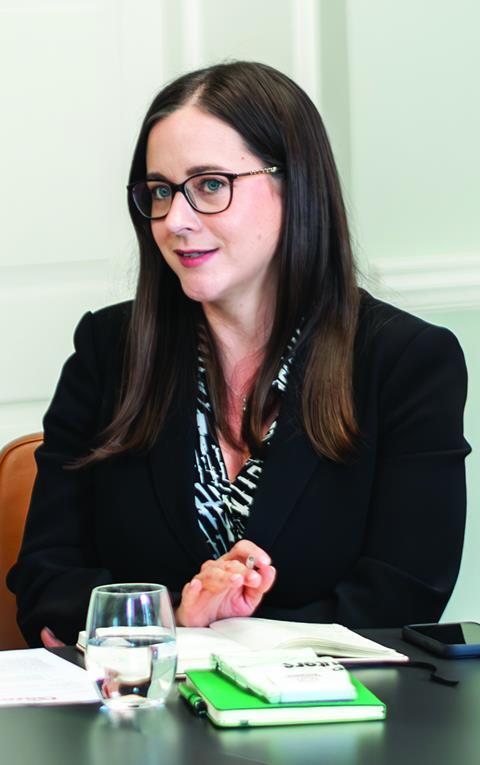
Property lawyer Yanthé Richardson is an equity partner at top-100 national firm Foot Anstey, acting for property developers and buyers. ‘Developers expect everything to happen very quickly, and when you’re at the disposal end of a development, buyers are under pressure from developers to make things happen quickly. So, my team spends as much time on communication as they do on actual legal work.’
Richardson observes that ‘one of the big challenges is that clients expect very quick responses, and balancing that with getting the actual job done is an age-old issue’. While elements of the residential conveyancing process can be commoditised, ‘you’re never going to replace people with tech when it comes to client care and hand-holding for what is often, for a consumer, the most stressful thing they’ll ever do’, she says.
Gregory Palos, equity partner and director at Lawrence Stephens, acts for financial institutions in real estate transactions where speed of response has always been a critical factor, particularly in respect of bridging when ‘we have to do in five to 10 working days what will take a residential or commercial lawyer three months to do.
‘The whole point about bridging is speed. When you’re acting for financial institutions, you sign up to service level agreement commitments to respond to every email on the day of receipt. You’re not necessarily answering it, but you’re acknowledging receipt and giving an indication as to when you will respond. So I don’t think that these things are particularly new.’
He adds that ‘given technological advances, like WhatsApp, people are more attuned to an instant response’.
For Clare Murray, founder and managing partner of CM Murray, which advises professional firms, managing client expectations is about ‘leveraging relationships, so you’ve got an understanding, allows you a bit more give and take in timing and delivery. It allows you to have a discussion about priorities, about when you are and aren’t available. Obviously, technology has made everyone much more accessible, but the bedrock of the relationship allows you to manage expectations as long as you’re communicating well… Ultimately, it’s about setting the parameters of the relationship and the understanding between you.’

Client expectations around speed of response vary by practice area. While it makes sense that a bridging loan is arranged quickly, other legal processes, such as divorce, deliberately incorporate a cooling-off period.
'We are working with the University of Reading to find out how AI can benefit our clients in all the practice areas we cover'
Tony Roe, Dexter Montague
Tony Roe, a family lawyer at Dexter Montague, explains that separated couples ‘can’t have fast divorces because there’s a 20-week cooling-off period for no-fault divorce. And if they do want them faster, they should look at non-court dispute resolution, which is one of the reasons why I’m an arbitrator, a collaborative lawyer trained as a mediator, because these things speed things up, whereas the court system is falling apart’.
Ed Simpson is founder of The Legal Director, which provides a fractional general counsel service to small and medium enterprises. ‘For us, client demand is around demonstrating value, because, very often, when we start working with them, our clients don’t know they need us,’ he says. ‘The problem might be as nebulous as the finance director is overwhelmed because legal [issues] land on his desk. So, being able to demonstrate the value of what we did for them is critical to us.’

‘We still want to be able to speak to our customers,’ says Chris Chapman, national sales director at Thomson Reuters. ‘A real challenge that we have as a large organisation supporting thousands of customers in Europe is making sure that we retain the human touch in understanding and responding to customers in a consistent way even when their primary point of contact isn’t available. And as the number of customers grows, so does the challenge of responding to them knowledgeably in a timely manner and this is where technology plays an increasingly important role.’
Ben Kieft is a corporate partner at Sphere Legal, which advises fast-growing private-equity-backed businesses, as well as handling regulatory work. The approach depends on the client’s preferences. ‘We get instructed by one client on about 2,500 matters a year, which requires us to have highly systematised operations at the back-end to support that sort of engagement. You have to build a process that works for each engagement. Some people want a personal contact [while] others … are delegating work through a structure.’
Andrew Katzen, a partner at specialist litigation firm Hickman & Rose, represents lawyers, people in financial services and accountants. ‘The kind of work I do involves life-changing problems for my clients. They stand to lose their careers, livelihoods, and sometimes their liberty… When you’re dealing with high-stakes litigation there’s no substitute for personal contact.’ He adds: ‘Like many people, I don’t think that client demands have changed very much. It’s just perhaps lawyers are more attuned [to them].’
Laura Devine, managing partner of Laura Devine Immigration, is facing a very different challenge – the proposals in the government’s immigration white paper published in May. ‘It’s not that the legal market is reducing, but the fact that the UK is reducing the number of people coming here, and the fact that the UK seems unwelcoming,’ she says. However, she also acknowledges that this has been partially offset by an increased number of people leaving the US to come to the UK.
Client expectations around speed and efficiency are driving tech adoption and most firms are already using artificial intelligence tools. ‘We’ve been having a rethink about how we provide our service and embed tech tools to make it as efficient as possible,’ says Simpson.
Developing AI and business skills
Clare Murray, founder and managing partner of CM Murray, which has deployed Microsoft Copilot and Thomson Reuters Westlaw AI, sees AI as ‘an amazing multi-generational opportunity’, but emphasises the importance of training, particularly for senior lawyers. ‘It’s the responsibility of firms to provide extra AI training for those who need it, to build their confidence, as we did when we first introduced Office. As a senior lawyer, I know how to craft prompts and give directions on the sources to be used. Someone with 30 years’ experience is often in the best position to use AI to leverage their expertise,’ she says, adding that the firm also has an AI usage policy.
Former lawyer Tim Coles, legal knowledge and development adviser at Thomson Reuters, agrees. ‘We sometimes get the impression that the native users of AI technology will be junior lawyers, but actually the people who are best placed to judge the output of a research query or [interpret] a contract are often more senior lawyers because they have the experience and knowledge to recognise a good, usable answer.’
Gregory Palos at Lawrence Stephens highlights the value of business education. ‘We introduced an 18-month training programme for senior associates so that they understand balance sheets, profit and loss and so on, because ultimately they are going to be involved in business decisions … and making their own business decisions will make them better advisers.’
Andrew Katzen (pictured) at Hickman & Rose agrees: ‘People are by far our most important investment. It’s a business, but it’s also a profession, so it’s about getting the balance right, financially and professionally.’
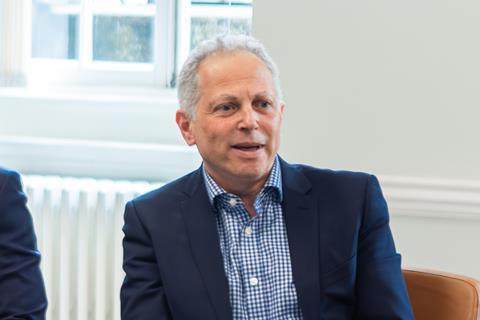
Gareth Brahams, founder and managing partner of employment firm BDBF, sees AI as a natural part of the tech evolution. ‘I see AI as just another technology tool, in the same way as email was massive, the internet was massive in terms of our access to clients, and clients’ access to the law, our access to research tools and so on. It’s not going to destroy what we do, but it’s going to change how we do it.’
Dexter Montague is working with the University of Reading to explore how AI can support high-street firms and access to justice. ‘We are working with the university to find out how AI can benefit our clients in all the practice areas we cover,’ says Roe.
As Brahams observes, it is impossible to separate technology from generational change. For example, the tasks that trainees do have changed. ‘It’s a great opportunity for enthusiastic new lawyers not to have to spend hours checking whether the law has changed, for example, and instead to have a tool which will just tell you the answer, and move on to the next job. This will make them become better, and more useful to their clients.’
This also means managing client perceptions around AI and value for money. Murray’s clients often ask whether her firm uses AI.
As an employment lawyer, many of Braham’s clients are paying legal fees out of their savings. ‘So any way in which we can deliver value for less money is good,’ he says, touching on the potential for AI to enable the firm to take on more work. ‘If it increased the accessibility of good legal advice, that would be a good thing too, although I’m sceptical whether it will do that.’
Consumers have grown more tech savvy, and increasingly expect legal processes to be digitised. ‘The public, obviously depending on demographics and age, expect you to use technology. They are often surprised that the home-buying and selling process is still quite antiquated,’ says property lawyer Richardson, who is on the Digital Property Market Steering Group.
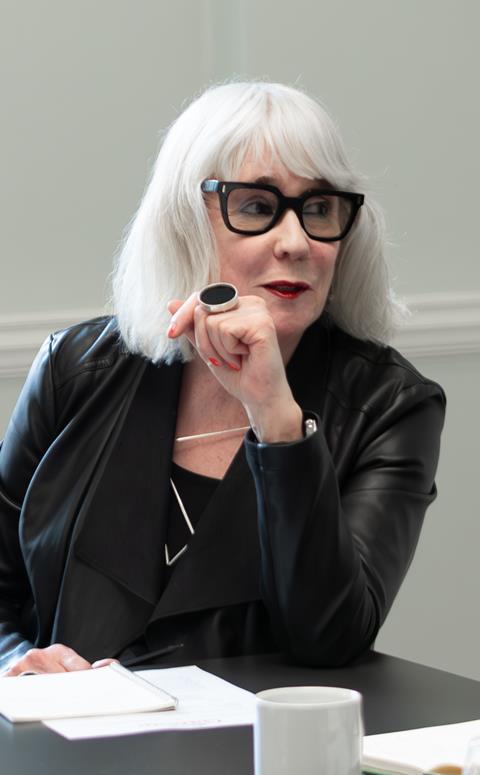
She references research by the Open Property Data Association which found that ‘25% of respondents believed that the government should lead on digitisation of the home-buying and selling process’.
Although the process itself is not digitised, Richardson highlights tools that have become widespread but are not universal. ‘DocuSign is something that everybody has adopted, but if you’re buying a house you still have to wet-ink sign a transfer because lenders and the Land Registry are not fully on board with qualified electronic signatures. While margins have been squeezed for many years, this is an opportunity for the end recipient of our services to get a better service as a result of us adopting technology, without reducing fees.’ She adds that technology adoption helps to bring talent into property law – as candidates often ask how it is used to improve the job and client service.
While firms can make their own choices about business strategy, technology adoption and training in tech and business skills, they have no choice about the growing regulatory burden. Katzen, who deals with multiple regulators finds the Solicitors Regulation Authority the most problematic. ‘The lack of quality in SRA decision-making is quite breathtaking,’ he says. ‘I get calls every day from law firms who are under investigation by the SRA or are looking for advice about the complexity of professional regulation. We’ve got the worst of both worlds: we have a system which is principles-based, which basically means that the SRA, with the benefit of hindsight, will blame us if we get anything wrong. But we also have a plethora of guidance… and woe betide you if you don’t follow it. It’s an extraordinary situation and it needs to change.’
Murray, while acknowledging that firm owners ‘experience a certain level of regulatory fatigue’, is less harsh, saying ‘a lot of what the SRA is doing is well motivated and has brought about cultural change – for example, by their handling of misconduct.’
Adam Merali, co-founder of boutique commercial and real estate firm Merali Beedle, expresses concern that ‘the regulatory structure doesn’t support innovation from new firms or market entrants’. He explains that ‘this is not just the SRA; it is also the banks who won’t deal with firms with fewer than four partners. If I was starting a firm today, I would probably find at least three other people, so that we could get on certain bank panels.’
He observes that regulation is ‘an inflationary process, because the more demands [regulators] ask of the people they’re regulating, the more time and money they have to spend adhering to those demands’. He questions whether the regulatory burden needs to be as extensive as it is.
Palos adds that the admin burden of regulatory compliance may be driving market consolidation as firms have to reach a certain size to manage this and remain profitable. Murray sees this as an opportunity for private equity (PE). ‘The infrastructure investment is so significant, which makes it the perfect opportunity for private equity because we need external funding to acquire these firms and consolidate them and invest in them for the future.’
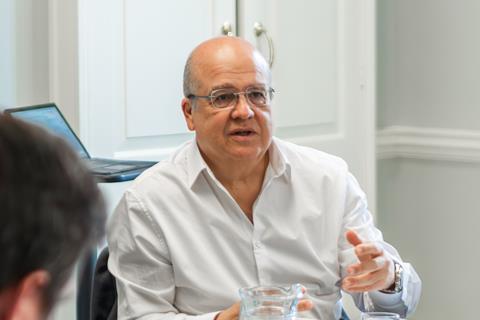
Merali agrees, but observes that ‘PE isn’t interested in smaller, high street firms. I wonder whether firms will need to have 15 or 20 partners to afford the admin of completing a risk assessment form for every matter’.
Kieft wonders whether the regulator’s focus is wrong, particularly around enforcement actions and matter risk assessment. ‘For growing firms, having a large admin team to support [regulation] is perhaps misguided, if you can find good, experienced advisers and use tech to ensure that some of the [requirements] are implemented. There are a lot of tools you can use to reduce some of the burdens, but the challenge is persuading the SRA that what you’ve done is a sensible and proportionate approach.’
Recruitment and retention
Finally, each firm outlined its approach to recruitment and retention. Murray highlighted a survey by Lamp House Strategy and Chambers and Partners on associate retention. It found that 79% of associates focused first on culture and then on quality of work opportunities, work-life balance, and leadership vision. ‘We sometimes forget to tell our junior members of staff why we’re here and what the long-term plan is,’ she says.
Other responses reflected the variety of business models represented around the table. Brahams at BDBF focuses on ‘fulfilling professional lives, doing the best work in the field, with a work-life balance that is unmatched’, although ‘this doesn’t mean you will never work a weekend because we do litigation’.
Sphere Legal has ‘struggled with junior associate recruitment, so our focus is primarily on more senior hires’, says Kieft. ‘We offer a good work-life balance and flexible working, but we still need to bring in junior talent and train them up.’
Foot Anstey as a top-100 firm competes with bigger practices for junior talent, and Richardson sees ‘a real desire [among candidates] for knowing that there’s a proper career path’. She is passionate about diversity, particularly around socio-economic background, and transparency around firm strategy. Palos reports that Lawrence Stephens has had a good success rate in attracting associates from US firms who are looking for a stronger work-life culture. He agrees on presenting a consistent strategic vision. ‘You need to be clear and open about that in your recruitment process, [as well as] the qualities and contribution you’re looking for.’
'People are attracted by the quality of work, and the quality of our clients'
Laura Devine, Laura Devine Immigration
Merali and Simpson operate non-traditional consultancy models. At Merali Beedle lawyers are paid a percentage of their work. ‘People come to us because they are dissatisfied with the traditional legal structure. We offer a completely transparent remuneration structure, you can choose how hard you want to work, and how many cases you take on, and while you’re accountable for your success, we help in every way we can,’ says Merali.
Partnerships with universities support graduate recruitment. ‘We like to grow our own,’ says Katzen, and Hickman & Rose has an arrangement with UCL’s support network for law students from non-traditional backgrounds. Roe at Dexter Montague provides work experience for University of Reading graduates. ‘It’s about getting them in early, and showing them it’s a friendly firm where they can do good work.’
Finally, Laura Devine goes back to core principles: ‘Dedication to immigration and human rights, which [underpins] the reputation of the firm. People are attracted by the quality of work, and the quality of our clients. We are very diverse, and people often comment that they like the female culture,’ she concludes.
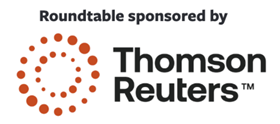
Joanna Goodman is a freelance journalist
Photographs by Lala Cogo Photography







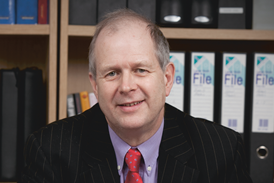





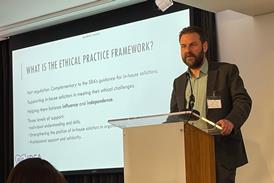




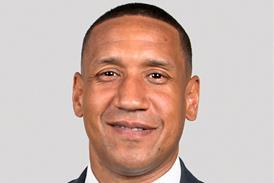







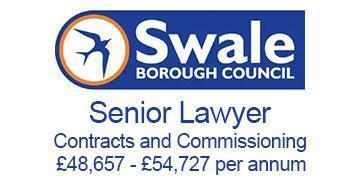




1 Reader's comment